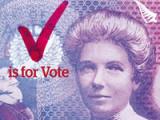Just over three weeks after New Zealand women became the first in the world to vote in a national parliamentary election, voting was held in the four Māori electorates.
Suffrage Campaign
Events In History
New Zealand women went to the polls for the first time, just 10 weeks after the governor signed the Electoral Act 1893, making this country the first in in which women had the right to vote in parliamentary elections.
When the governor, Lord Glasgow, signed a new Electoral Act into law, New Zealand became the first self-governing country in the world in which women had the right to vote in parliamentary elections.
The monster suffrage petition contained the signatures of more than 25,000 women. A dozen other, smaller petitions were also submitted around the same time.
These petitions, signed by 9000 women, contributed to the introduction of a Female Suffrage Bill in Parliament. This received majority support in the House of Representatives but was defeated in the Legislative Council.
Articles
The House of Representatives

New Zealand's Parliament dates back to 1854, just 14 years after the signing of the Treaty of Waitangi and the beginning of the European settlement of the country. For most of its history as a nation state, New Zealand has had some form of elected government. Read the full article
Page 2 - Quick history
New Zealand's Parliament has been making laws, scrutinising the government and representing New Zealanders for over 150 years.
Women and the vote

On 19 September 1893 the governor, Lord Glasgow, signed a new Electoral Act into law. As a result of this landmark legislation, New Zealand became the first self-governing country in the world in which all women had the right to vote in parliamentary elections. Read the full article
Page 1 - New Zealand women and the vote
On 19 September 1893 the governor, Lord Glasgow, signed a new Electoral Act into law. As a result of this landmark legislation, New Zealand became the first self-governing country
Page 2 - Brief history
A history of the movement that won New Zealand women the vote in
Page 3 - Women's suffrage milestones
Women's suffrage milestones from 1869 to
Page 4 - The National Council of Women
Three years after the vote was won in 1893, a convention of representatives of 11 women's groups from throughout New Zealand resolved itself into the National Council of
Page 5 - World suffrage timeline
Although a number of other territories enfranchised women before 1893, New Zealand can justly claim to be the first self-governing country to grant the vote to all adult
Page 6 - Women's suffrage petition
Search the women's suffrage
Page 7 - About the suffrage petition
Information about the suffrage petition and searchable
Page 8 - Further information
Find out more about women and the vote in New
Māori and the vote

Between April and June 1868 the first four Māori MPs were elected to New Zealand's Parliament. Despite ongoing debate, the Māori seats remain a distinctive feature of this country's electoral landscape almost 150 years later. Read the full article
Page 2 - Setting up the Māori seats
Early Māori representation in New Zealand
Suffrage 125
A selection of women’s stories that reflect key issues and activities prominent during three heightened waves of feminist activism: suffrage campaign, womens liberation movement and women's activism today Read the full article
Page 1 - Stories of women's activism
A selection of women’s stories that reflect key issues and activities prominent during three heightened waves of feminist activism: suffrage campaign, womens liberation movement
Suffrage 125
2018 marked 125 years of women’s suffrage in New Zealand. As we remember the suffragists and their achievements, how can we also explore women’s rights and feminist issues in New Zealand today? Read the full article
Page 1 - Suffrage 125
2018 marked 125 years of women’s suffrage in New Zealand. As we remember the suffragists and their achievements, how can we also explore women’s rights and feminist issues in New
Page 2 - # Kate Sheppard sent me
A poignant placard used in a 2017 Women’s March – ‘Kate Sheppard sent me’ – highlighted the connection between the fight for women’s suffrage in the 1890s and the ongoing women’s


















































